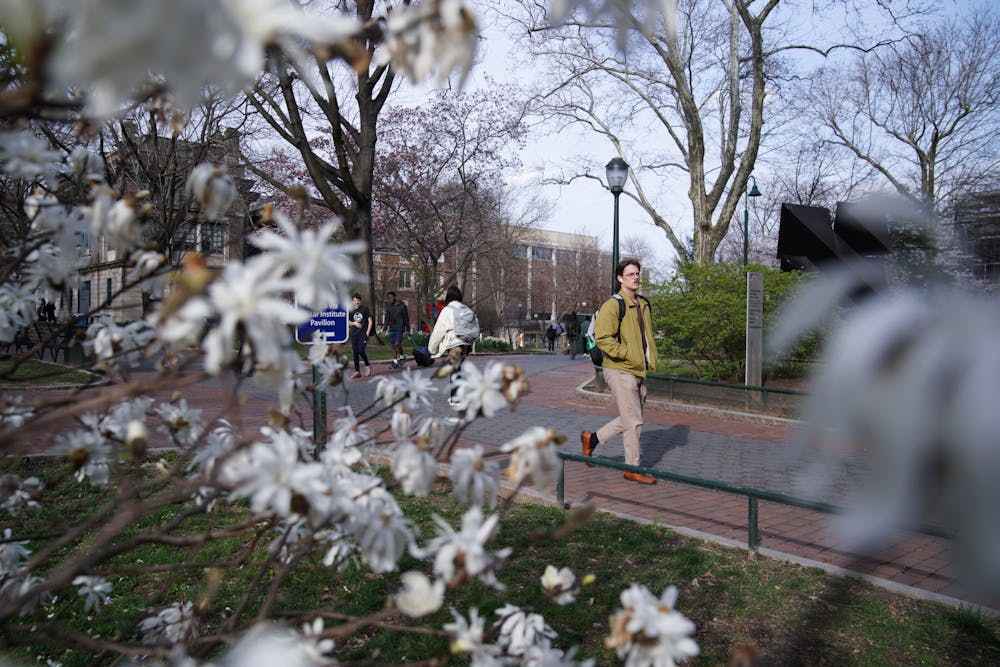
The Supreme Court’s decision on Friday to strike down President Biden’s student debt relief plan has drawn mixed reactions from members of the Penn community.
The court ruled 6-3 that the Secretary of Education did not have the authority to cancel student debt, rejecting the plan Biden announced in August 2022. The proposal would have forgiven up to $20,000 in student loans for low-income borrowers.
The Daily Pennsylvanian spoke with one professor and several Penn students who agreed that the current federal student loan system is flawed, but proposed different solutions to address the issue.
Student loans in the United States currently total over $1.7 trillion, according to government data. In Biden’s proposal, individuals with an annual income below $125,000 or a household income below $250,000 would receive up to $10,000 in student loan debt relief. Pell Grant recipients would be eligible for up to $20,000 of cancellation.
Laura Perna, vice provost for faculty and centennial presidential professor of education in the Graduate School of Education, said that she liked how the plan targeted borrowers based on income.
“For many, many students, you have to borrow in order to go to college,” she said. “Loans are not a choice."
After the ruling on Friday, the Biden administration announced that it would continue its efforts to provide “debt relief for as many borrowers as possible, as fast as possible.” Perna hopes for further increases in the purchasing power of the Pell Grant, which will award recipients with up to $7,395 for the 2023-24 academic year.
“It’s such an important part of the federal approach to making college affordable,” Perna said. “You don’t have to repay it — it’s a gift.”
Alex Guzman, a rising College junior and legislative director of the Penn Democrats, said that he was in favor of Biden’s proposal. He was disappointed to hear the Supreme Court’s decision given the plan’s potential to help students from lower- and middle-income households.
According to Guzman, the ruling highlights the need to “seriously talk about the affordability of college.” He said that private institutions like Penn are responsible for ensuring that all students, no matter their socioeconomic background, are able to attend college.
In March, Penn raised the eligibility threshold for financial aid packages that fully cover undergraduate costs to $75,000, up from the previous household limit of $65,500. Guzman believes that Penn should continue increasing the income limit to cover more families.
“It’s incumbent on institutions like Penn, that have the financial resources to support their students, to continue to do that [after the ruling],” he said.
Joshua Frazier, a rising junior in Wharton and the College and vice president of Penn College Republicans, believes that the government’s guaranteed backing of student loans encourages institutions like Penn to “charge whatever they want.” He said that although the lack of affordable education is a pressing issue, the solution is not for the government to forgive debt.
“Those were obligations between one person and the government,” Frazier said. “[Borrowers] took on this debt knowing what they were signing up for.”
He added that both political parties should have a conversation about “not just putting a band-aid” on the issue of student debt.
“A bailout is not the solution to the problem,” Frazier said. “There's a bigger underlying systemic issue with how debt is given out in the U.S., and the government backing it is exacerbating the problem.”
Arushi Saxena, rising College junior and editor-in-chief of the Penn Journal of PPE, disagreed with the Supreme Court’s decision that Biden’s plan overstepped legal bounds. The proposal had relied on the Higher Education Relief Opportunities for Students Act, which allows the Secretary of Education to “waive or modify” financial assistance statutes in certain emergencies.
“I think [the creators of the plan] were very conscious to not overreach their authority,” Saxena said.
Immediately after the ruling, the Department of Education announced plans to open alternative paths to student debt cancellation using its authority under the Higher Education Act.
Noting discussions around the politicization of the judicial branch, Saxena hopes that the administration will also work to keep the Supreme Court “the nonpartisan body it’s supposed to be.” Maintaining the court’s neutrality is especially important given the impact of its recent decision on affirmative action, which will impact underrepresented groups, she added.
Regarding inequality in education, Perna also highlighted the “racialized nature of student loan debt.” Borrowing rates are higher on average for Black students than for other students, according to Perna.
“I think it’s clear that our current approach to financing the costs of higher education is broken,” she said.
Guzman agreed that the issue of college affordability and student debt needs a solution.
“If college continues to get more expensive, and there's no substantive plan that fixes these student debt policies, it’s going to seriously debilitate generations to come,” he said.
The Daily Pennsylvanian is an independent, student-run newspaper. Please consider making a donation to support the coverage that shapes the University. Your generosity ensures a future of strong journalism at Penn.
Donate







